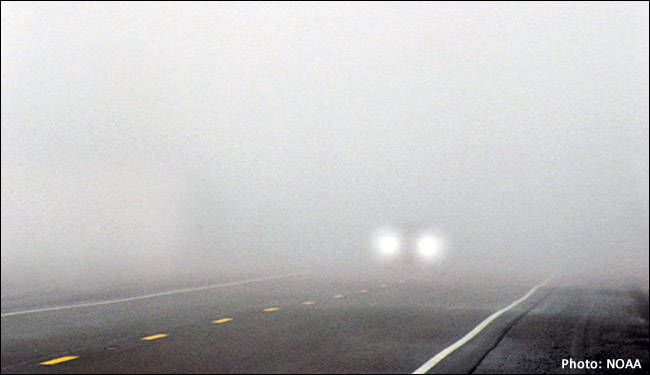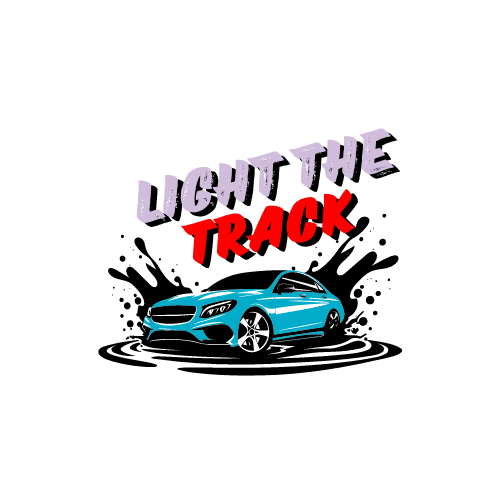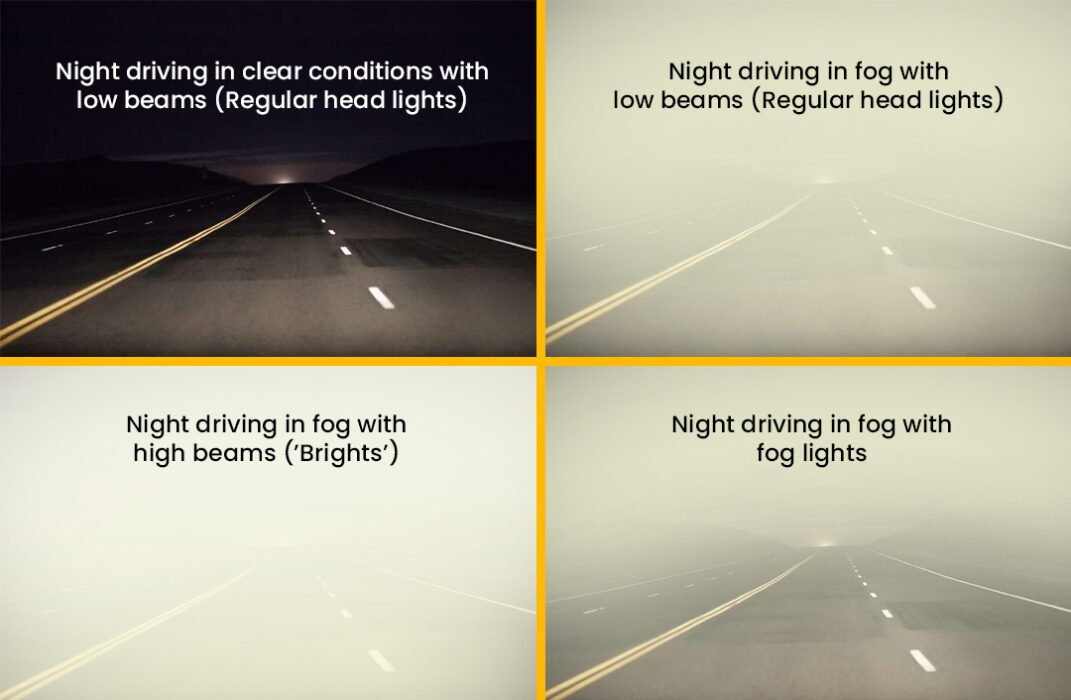When driving in heavy fog, use low beam headlights and fog lights for better visibility. This will make you more visible to other drivers and help you see the road clearly.
Driving in heavy fog can be challenging and dangerous. Reduced visibility increases the risk of accidents, making it crucial to use the appropriate lights to ensure safety on the road. When faced with dense fog, it’s essential to use the right lights to improve visibility and alert other drivers of your presence.
By understanding the types of lights suitable for foggy conditions and how to use them effectively, drivers can navigate through fog with confidence and reduce the likelihood of accidents. Let’s explore the best lighting options for driving in heavy fog and the reasons behind their effectiveness.

Credit: www.statefarm.com
Navigating The Hazards Of Fog
When driving in heavy fog, it’s important to use the appropriate lights to navigate the hazards and ensure safety. Using dipped headlights and fog lights can improve visibility for both the driver and other road users. The use of yellow light is particularly effective in penetrating dense fog, providing enhanced visibility and reducing glare. Additionally, it’s crucial to avoid using high-beam lights in foggy conditions, as they can further impair visibility. By making the vehicle visible to others and using the right lights, drivers can mitigate the risks associated with heavy fog and ensure a safer journey.
Fog Lights: An Essential Tool
When driving in dense fog, it’s recommended to use dipped headlights and fog lights. This combination enhances your visibility to other drivers and improves your ability to see the road ahead clearly. Yellow light is especially effective in fog due to its longer wavelengths, which scatter less and penetrate fog more effectively, reducing glare and enhancing visibility. If you have fog lights, it’s important to activate them in heavy fog to make your vehicle more visible to others. Additionally, it’s crucial to use low-beam headlights to ensure that your taillights are also on, allowing others to see your vehicle from both the front and the rear. However, it’s important to avoid using high-beam lights in foggy conditions as they can create glare and reduce visibility for you and other drivers.
Low Beams Vs. High Beams
When driving in heavy fog, it is important to use the correct lights to ensure safety on the road. Low beams are preferable over high beams in foggy conditions. High beams can actually be dangerous in fog as they reflect off the fog and create a glare that impairs visibility. On the other hand, low beams provide a wider, shorter beam of light that illuminates the road without reflecting off the fog. This allows for better visibility of the road ahead and makes the vehicle more visible to other drivers. In addition to low beams, fog lights can also be used if available. Fog lights are positioned lower on the vehicle and produce a wide, low beam that cuts through the fog more effectively than regular headlights. However, it is important to note that fog lights should only be used in conjunction with low beams and not on their own. By using low beams and fog lights when necessary, drivers can navigate through heavy fog safely.
Daytime Running Lights In Fog
In heavy fog, it is important to use the appropriate lights to ensure visibility and safety on the road. When driving in foggy conditions during the daytime, using daytime running lights can be helpful. These lights are designed to make the vehicle more visible to other drivers, but they may not provide sufficient illumination to see the road ahead clearly.
While daytime running lights can help improve visibility, it is important to note their limitations. They are not specifically designed for foggy conditions and may not be as effective as dipped headlights and fog lights. Dipped headlights provide better visibility by illuminating the road directly in front of the vehicle, while fog lights are specifically designed to cut through fog and improve visibility in such conditions.
Therefore, in dense fog, it is recommended to use dipped headlights and fog lights if available. This combination will not only make your vehicle more visible to others but also provide better illumination of the road, helping you navigate safely through the foggy conditions.
Color Perception In Foggy Conditions
In heavy fog, it is recommended to use dipped headlights and fog lights for better visibility. The yellow light’s longer wavelength helps penetrate fog effectively, reducing glare and enhancing visibility in such conditions. This combination makes you more visible to other drivers and improves your ability to see the road ahead.
Using the right lights while driving in foggy conditions is crucial for safety. Yellow light is particularly effective in heavy fog, as it scatters less and can penetrate the fog more easily than other colors. This makes it easier to see the road ahead and reduces glare, improving visibility in snowy conditions as well. It is recommended to use dipped headlights and fog lights when driving in fog, as this makes you more visible to other drivers. However, high-beam lights should never be used in foggy conditions as they can cause glare and reduce visibility. It’s important to slow down and allow extra time to reach your destination and to make sure your vehicle is visible to others by using low-beam headlights.

Credit: www.weather.gov
Proper Use Of Taillights
|
When driving in dense fog, it is recommended to use dipped headlights and fog lights. These lights help improve visibility for both yourself and other drivers. Using yellow light can be especially effective in penetrating dense fog, reducing glare and enhancing visibility. Remember to avoid high-beam lights and opt for low-beam headlights to ensure your taillights are also on, making your vehicle more visible to others. In heavy fog, proper use of taillights is crucial for safety on the road. |
Additional Safety Measures
When driving in heavy fog, it’s recommended to use dipped headlights and fog lights to increase visibility to other drivers and improve your own ability to see the road ahead. Yellow lights are particularly effective due to their longer wavelengths and reduced glare.
Avoid using high-beam lights and instead use low-beam headlights and fog lights if available.
| Driving in fog: | Use dipped headlights and fog lights for visibility. |
| Road markings: | Guide speed adjustments and provide direction in heavy fog. |
In dense fog, prioritize using dipped headlights and fog lights to enhance visibility. Yellow light is effective for penetrating fog due to its longer wavelength. Low-beam headlights are essential for making your vehicle visible to others. Avoid high-beam lights as they can cause glare. Road markings are crucial for guiding speed adjustments and providing direction in heavy fog. Remember to drive cautiously and prioritize safety measures in challenging weather conditions.
Legal And Etiquette Aspects
When driving in heavy fog, it is recommended to use dipped headlights and fog lights. This will improve your visibility to other drivers and help you see the road more clearly. Yellow lights are particularly effective in penetrating fog and enhancing visibility in snowy conditions.
| When driving in dense fog, it is recommended to use dipped headlights and fog lights. This will enhance visibility for other road users and improve your ability to see the road clearly. Yellow light is the best option for fog due to its longer wavelengths that penetrate fog effectively. Avoid using high-beam lights and opt for low-beam headlights to make your vehicle more visible. Exercise caution and slow down to ensure a safe journey in challenging weather conditions. |

Credit: practicalmotoring.com.au
Frequently Asked Questions
What Lights To Use When Driving In Dense Fog?
When driving in dense fog, it is recommended to use dipped headlights and fog lights. This will make you more visible to other road users and allow you to see the road ahead more clearly. Yellow light is particularly effective in penetrating fog, so consider using lights with a yellow hue for enhanced visibility.
Avoid using high-beam lights as they can cause glare.
What Is The Best Light To See In Fog?
For the best visibility in fog, use yellow lights. Their longer wavelengths scatter less, penetrate fog effectively, and reduce glare. This enhances visibility in heavy fog and snowy conditions. It is recommended to use dipped headlights and fog lights for better visibility and to make the vehicle more visible to others.
Which Light Is Used During Fog?
Use low beam headlights and fog lights when driving in fog for better visibility and to make your vehicle more visible to others. Yellow light is also effective in penetrating dense fog for enhanced visibility. Avoid using high beams as they can create glare.
What Lights To Use In Light Fog?
When driving in light fog, it is recommended to use low beam headlights. Using fog lights in addition to low beams can also improve visibility. Low beams and fog lights help you see the road ahead better and make your vehicle more visible to other drivers.
Avoid using high beams as they can cause glare and reduce visibility in foggy conditions.
What Lights Should You Use When Driving In Heavy Fog?
When driving in heavy fog, it is recommended to use dipped headlights and fog lights. This will make you more visible to other road users and allow you to see the road ahead more clearly.
Why Is Yellow Light Best For Seeing In Fog?
Yellow light is best for seeing in fog because it has longer wavelengths, which means it scatters less and can penetrate fog more effectively. The yellow color reduces glare and enhances visibility in heavy fog and snowy conditions.
Which Light Should Be Used During Fog?
During foggy conditions, it is advisable to use yellow-colored lights for better visibility. Yellow light has a larger wavelength, allowing it to easily penetrate through dense fog.
Conclusion
When driving in heavy fog, it’s important to use the appropriate lights to ensure your safety and the safety of other road users. The recommended lights to use are dipped headlights and fog lights, as they improve visibility and reduce the risk of accidents.
Additionally, yellow light is the best color to use in foggy conditions, as it scatters less and can penetrate fog more effectively. Remember to always slow down and allow extra time to reach your destination when driving in heavy fog.


Leave a Reply